Introduction
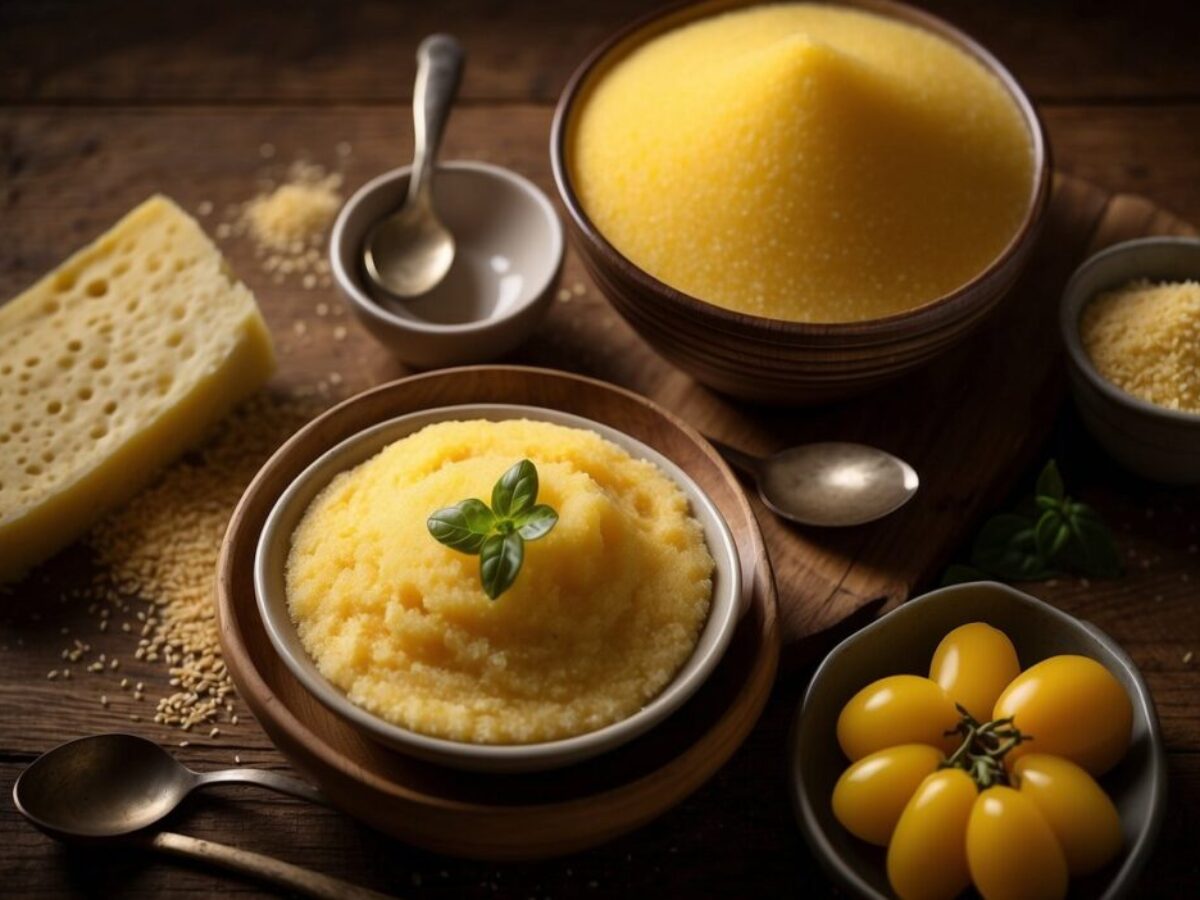
In the world of flour varieties, two commonly used options are semolina and cornmeal. While both are versatile and can be used in a variety of dishes, there are some key differences between the two. This article aims to provide a comprehensive comparison of semolina and cornmeal, exploring their characteristics, uses, and benefits. By understanding the distinctions in texture, taste, and culinary applications, readers can make informed choices when it comes to incorporating these flours into their cooking. So, whether you’re looking to make pasta, bread, or a delicious cornbread, read on to discover the pros and cons of semolina and cornmeal.
Understanding The Differences Between Semolina And Cornmeal
Semolina and cornmeal are both types of flour, but they have distinct differences. Semolina is made from durum wheat and has a coarser texture compared to cornmeal. It is commonly used in pasta and bread making. On the other hand, cornmeal is made from dried corn kernels and has a finer texture. It is often used in making cornbread, polenta, and tortillas. Another difference is in taste, with semolina having a nuttier flavor while cornmeal has a sweeter and corn-like taste. These variations in texture and taste make each flour suitable for different culinary applications.
Semolina Flour
Semolina flour is a type of flour commonly made from durum wheat. It has a coarse texture compared to other flours, making it ideal for making pasta and bread. It is known for its high protein content, which gives it excellent elasticity and strength when used in dough. Semolina flour is also rich in dietary fiber, providing added nutritional benefits. Its nutty flavor adds a unique taste to dishes, making it a popular choice in various cuisines. Whether you’re making homemade pasta or baking bread, semolina flour can add a delightful texture and taste to your recipes.
Overview Of Semolina Flour
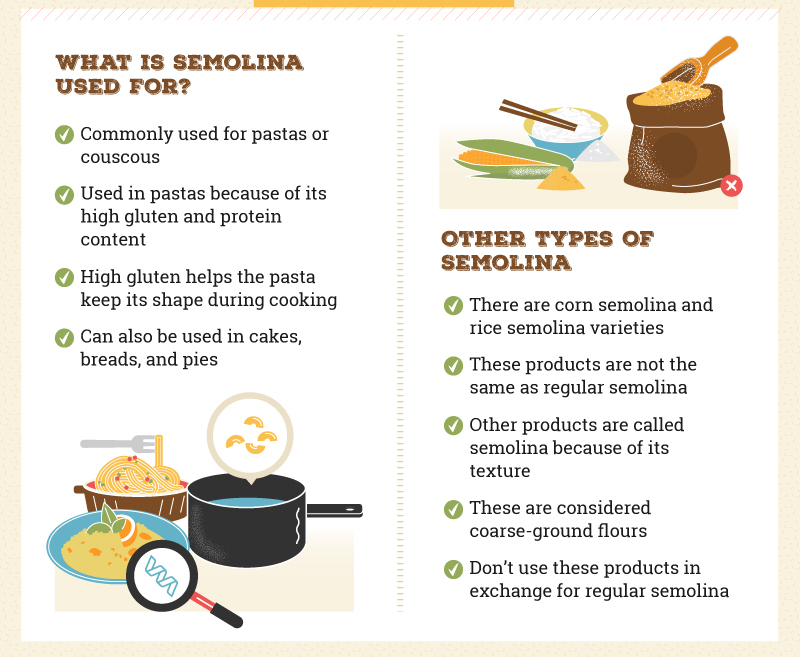
Semolina flour is a type of flour that is made from durum wheat. It is known for its coarse texture, which sets it apart from other types of flour. Semolina flour has a high protein content, making it ideal for making pasta and bread dough. It also contains dietary fiber, which provides added nutritional benefits. Semolina flour has a distinct nutty flavor that adds a unique taste to dishes. It is a versatile ingredient that can be used in various cuisines and recipes. Whether you’re making homemade pasta or baking bread, semolina flour adds texture and flavor to your creations.
Uses And Benefits Of Semolina Flour
Semolina flour has a wide range of uses and offers numerous benefits in the culinary world. It is commonly used to make pasta, giving it a distinct texture and flavor. Semolina flour is also ideal for making bread dough, providing a rustic and hearty taste. Additionally, it can be used to make desserts like semolina pudding or halva.
One of the key benefits of semolina flour is its high protein content, which contributes to the development of gluten in dough. This makes it easier to shape and create dough with good elasticity. Semolina flour also contains dietary fiber, which aids in digestion and promotes a healthy digestive system. With its unique nutty flavor and versatility, semolina flour is a valuable ingredient in various cuisines and recipes.
Cornmeal
Cornmeal is a type of flour that is made from dried, ground corn. It has a slightly coarser texture compared to semolina flour, making it ideal for certain culinary applications. Cornmeal is commonly used in baking, especially for making cornbread, muffins, and pancakes. It can also be used as a coating for frying or as an ingredient in batters. Cornmeal offers a distinct corn flavor, adding a delicious taste to various dishes. It is rich in fiber and provides essential nutrients like iron and B vitamins. Overall, cornmeal is a versatile and nutritious ingredient that can enhance the flavor and texture of your recipes.
Overview Of Cornmeal

Cornmeal is a type of flour that is made from dried, ground corn. It is typically yellow in color and has a slightly coarse texture compared to other flours. Cornmeal is commonly used in baking, especially for making cornbread, muffins, and pancakes. It can also be used as a coating for frying or as an ingredient in batters. Cornmeal offers a distinct corn flavor, adding a delicious taste to various dishes. It is rich in fiber and provides essential nutrients like iron and B vitamins. Cornmeal is a versatile and nutritious ingredient that can enhance the flavor and texture of your recipes.
Uses And Benefits Of Cornmeal
Cornmeal has a wide range of uses in the culinary world. It is commonly used in baking to make delicious cornbread, muffins, and pancakes. The coarse texture of cornmeal also makes it perfect for breading and frying foods, giving them a crispy and flavorful coating. Additionally, cornmeal can be used as a thickening agent in soups, stews, and gravies.
In terms of benefits, cornmeal is a good source of dietary fiber, which aids in digestion and promotes a healthy gut. It also contains essential nutrients like iron and B vitamins, which are important for overall health and energy production. Moreover, cornmeal offers a distinct corn flavor that adds a delicious taste to various dishes. It is a versatile and nutritious ingredient that can enhance the flavor and texture of your recipes.
Texture And Taste
When it comes to texture and taste, there are notable differences between semolina and cornmeal. Both types of flour have a finer texture compared to their whole grain counterparts. Semolina flour has a slightly grainy texture that adds a pleasant bite to dishes, making it particularly well-suited for pasta making. On the other hand, cornmeal has a coarser texture that adds a unique crunchiness and rustic quality to baked goods and fried foods. In terms of taste, semolina has a more neutral flavor, allowing it to complement a wide range of ingredients. Cornmeal, on the other hand, offers a distinct corn flavor that adds a delicious taste to various dishes. So, depending on your preference for texture and taste, you can choose between semolina and cornmeal to enhance the flavor and texture of your recipes.
Comparing The Texture And Taste Of Semolina Vs Cornmeal
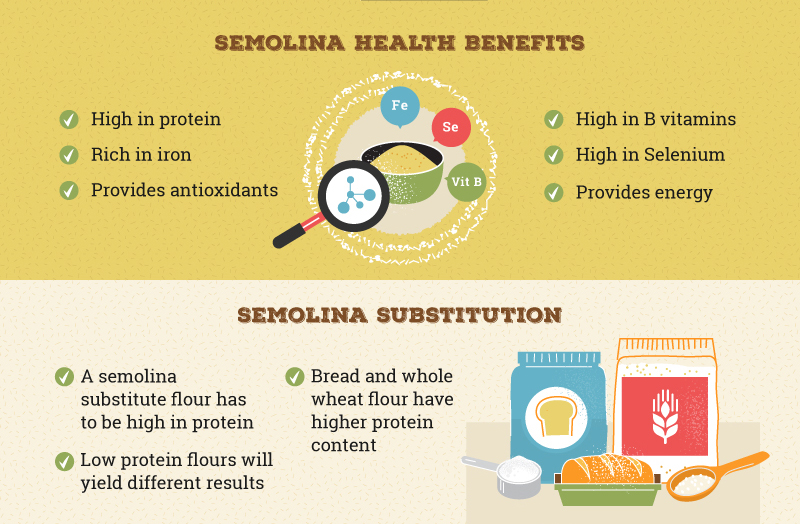
When it comes to texture and taste, there are notable differences between semolina and cornmeal. Both types of flour have a finer texture compared to their whole grain counterparts. Semolina flour has a slightly grainy texture that adds a pleasant bite to dishes, making it particularly well-suited for pasta making. On the other hand, cornmeal has a coarser texture that adds a unique crunchiness and rustic quality to baked goods and fried foods. In terms of taste, semolina has a more neutral flavor, allowing it to complement a wide range of ingredients. Cornmeal, on the other hand, offers a distinct corn flavor that adds a delicious taste to various dishes. So, depending on your preference for texture and taste, you can choose between semolina and cornmeal to enhance the flavor and texture of your recipes.
Culinary Application
Semolina and cornmeal have versatile culinary applications. Semolina flour is commonly used to make pasta, giving it a distinct texture and bite. It can also be used to make different types of bread, like focaccia or pizza dough, to add a touch of rustic flavor. Cornmeal, on the other hand, is often used to make cornbread, tortillas, and cornmeal crusts for dishes such as quiches or tarts. It adds a unique crunch and a subtle taste of corn to these recipes. Both semolina and cornmeal can also be used as a coating for fried foods, providing a crispy and flavorful crust.
Best Practices For Using Semolina And Cornmeal In Cooking And Baking
When using semolina and cornmeal in cooking and baking, there are a few best practices to keep in mind. Here are some tips to help you achieve the best results:
- Measure accurately: Both semolina and cornmeal can have a significant impact on the texture of your dish, so it’s important to measure them accurately to maintain the desired consistency.
- Use as a coating: Semolina and cornmeal work great as coatings for fried foods, providing a crispy and flavorful crust. Dredge your ingredients in the flour before frying to achieve a delicious crispy finish.
- Combine with other flours: Semolina and cornmeal can be mixed with other flours to enhance the texture and flavor of your baked goods. Experiment with different ratios to find the perfect combination for your recipes.
- Adjust liquid ratios: Semolina and cornmeal absorb more liquid than regular flour, so you may need to adjust the amount of liquid in your recipes. Gradually add liquid until you reach the desired consistency.
- Toast before using: To enhance the flavor of semolina and cornmeal, consider toasting them lightly before incorporating them into your dishes. This will add a nutty aroma and depth of flavor.
By following these best practices, you can make the most out of semolina and cornmeal in your cooking and baking adventures.
Recipes Using Semolina And Cornmeal
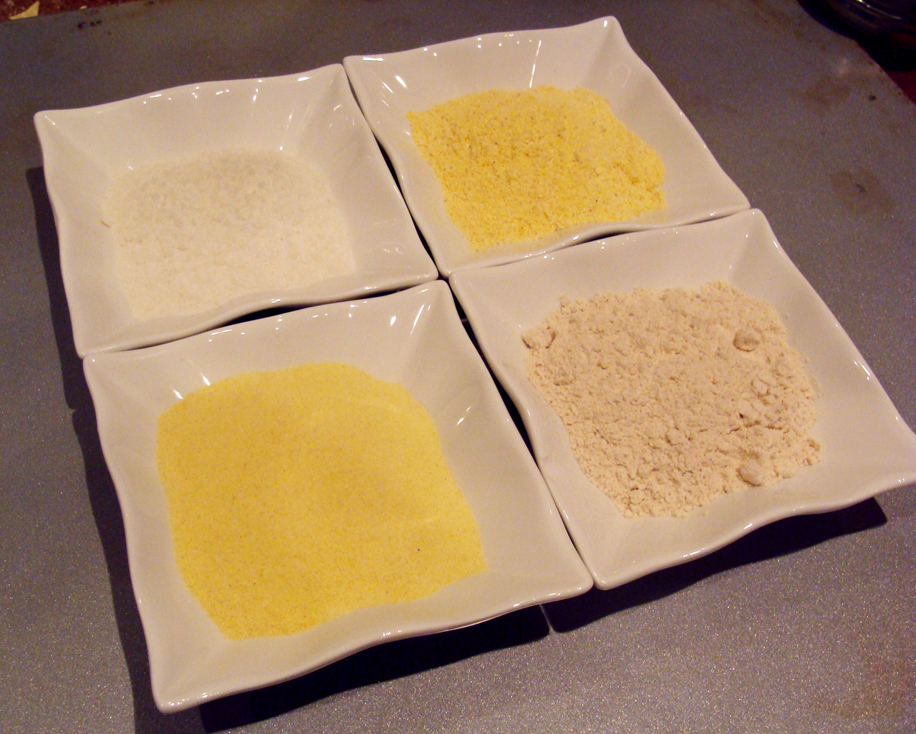
There are many delicious recipes that make use of semolina and cornmeal. Here are a few ideas to inspire you in the kitchen:
- Semolina Pancakes: Replace some of the regular flour in your pancake recipe with semolina for a fluffy and nutty variation.
- Cornmeal Crusted Fish: Coat your fish fillets in a mixture of cornmeal, herbs, and spices for a crispy and flavorful crust when frying or baking.
- Semolina Pizza Dough: Combine semolina with regular flour to create a pizza dough with a slightly denser texture and a rich, nutty flavor.
- Cornbread: Use cornmeal as the main ingredient in a classic cornbread recipe for a moist and slightly grainy texture that pairs perfectly with savory dishes.
- Semolina Pudding: Create a creamy and comforting dessert by simmering semolina in milk and sweetening it with sugar and vanilla.
Remember to adjust the ratios of semolina and cornmeal to suit your taste preferences and the desired texture in each recipe. Enjoy exploring the versatility of these flours in your cooking adventures!
Conclusion
In conclusion, both semolina and cornmeal are versatile flours that can enhance the texture and flavor of various dishes. While semolina offers a slightly denser texture and a nutty taste, cornmeal provides a moist and grainy texture that is perfect for cornbread and crusts. The choice between semolina and cornmeal ultimately depends on personal preference and the specific culinary needs of each recipe. Whether you’re making pancakes, pizza dough, or a comforting pudding, experimenting with these flours can add a delicious twist to your favorite dishes. So go ahead, get creative in the kitchen and enjoy the wonderful world of semolina and cornmeal!
Final Thoughts On Choosing Between Semolina And Cornmeal
When it comes to choosing between semolina and cornmeal, it ultimately boils down to personal preference and the specific needs of your recipes. Both flours offer unique textures and flavors that can enhance a variety of dishes. If you’re looking for a denser texture and a nutty taste, semolina is the way to go. On the other hand, if you prefer a moist and grainy texture, cornmeal is the better option. Both flours are versatile and can be used in a wide range of recipes, so don’t be afraid to experiment and discover which one suits your taste buds best. Happy cooking!
Recommendations Based On Specific Culinary Needs Or Preferences
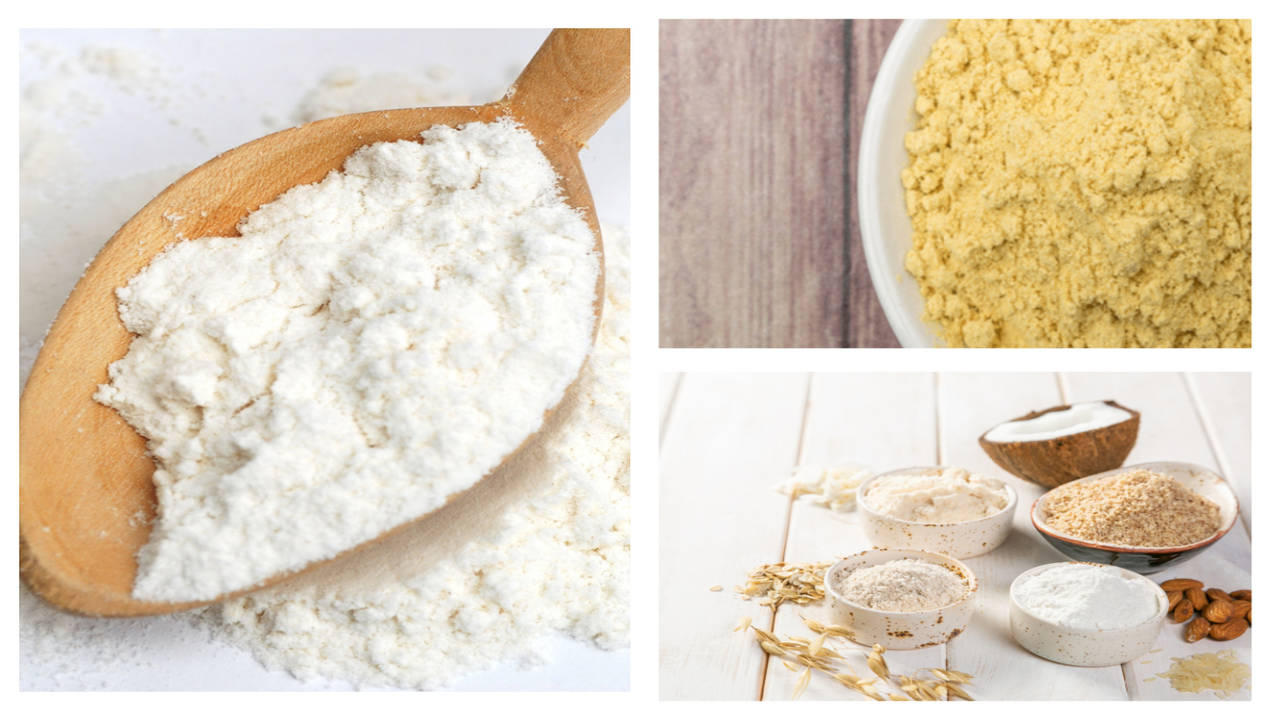
Based on specific culinary needs or preferences, the choice between semolina and cornmeal can vary. Here are some recommendations:
- For pasta lovers: Semolina flour is the go-to choice for making homemade pasta. Its dense texture gives pasta that perfect al dente bite.
- Gluten-free options: If you’re following a gluten-free diet, cornmeal is a great alternative. It can be used to make gluten-free pizza crusts, bread, and desserts.
- Crispy coatings: When it comes to coating fried foods like chicken or fish, cornmeal provides a crunchy and golden exterior.
- Nutty flavor enhancer: Semolina flour adds a unique nutty flavor to bread, cakes, and cookies, making it ideal for those who enjoy a richer taste profile.
Ultimately, experimenting with both flours will help you determine which one best suits your culinary needs and preferences.
FAQ About Semolina Vs Cornmeal: Comparing Flour Varieties
Q: What is semolina and cornmeal?
A: Semolina and cornmeal are both types of flour, but they are made from different grains. Semolina is usually made from durum wheat, while cornmeal is made from ground corn.
Q: How do semolina and cornmeal differ in texture?
A: Semolina is gritty and coarse, while cornmeal is finer and softer in texture. Semolina is often used to make pasta, while cornmeal is commonly used in baking or for making porridge.
Q: Are there any nutritional differences between semolina and cornmeal?
A: Yes, there are some nutritional differences between semolina and cornmeal. Semolina is higher in protein and lower in fat compared to cornmeal. Cornmeal, on the other hand, is higher in carbohydrates and calories.
Q: Can semolina and cornmeal be used interchangeably in recipes?
A: It depends on the recipe. Semolina and cornmeal have distinct flavors and textures, so they may not always be suitable substitutes for each other. It’s best to use them as indicated in the recipe for the best results.
Q: Which dishes are typically made with semolina?
A: Semolina is commonly used to make pasta, couscous, and gnocchi. It can also be used in desserts like cakes and puddings for its unique texture and flavor.
Q: What are some popular dishes that use cornmeal?
A: Cornmeal is widely used in making cornbread, polenta, corn muffins, and cornmeal pancakes. It is also used as a breading for fried foods like fried chicken or fish.
Q: Are semolina and cornmeal gluten-free?
A: No, both semolina and cornmeal contain gluten. Semolina is made from wheat, which contains gluten, while cornmeal is made from corn, which is naturally gluten-free. However, cross-contamination is possible in processing facilities.

We are introducing OH! NANA, where culinary excellence meets sustainability! Our journey began with a passion for creating delicious, nutrient-dense dishes while minimizing waste and environmental impact. At OH! NANA, we believe that great taste and nutritional value can go hand in hand with responsible sourcing and production. Our commitment to delivering intense flavors and high nutritional value is paired with a dedication to reducing waste in every aspect of our operations. From sourcing fresh, locally-grown ingredients to implementing efficient kitchen practices, we strive to positively impact both your health and the health of our planet.